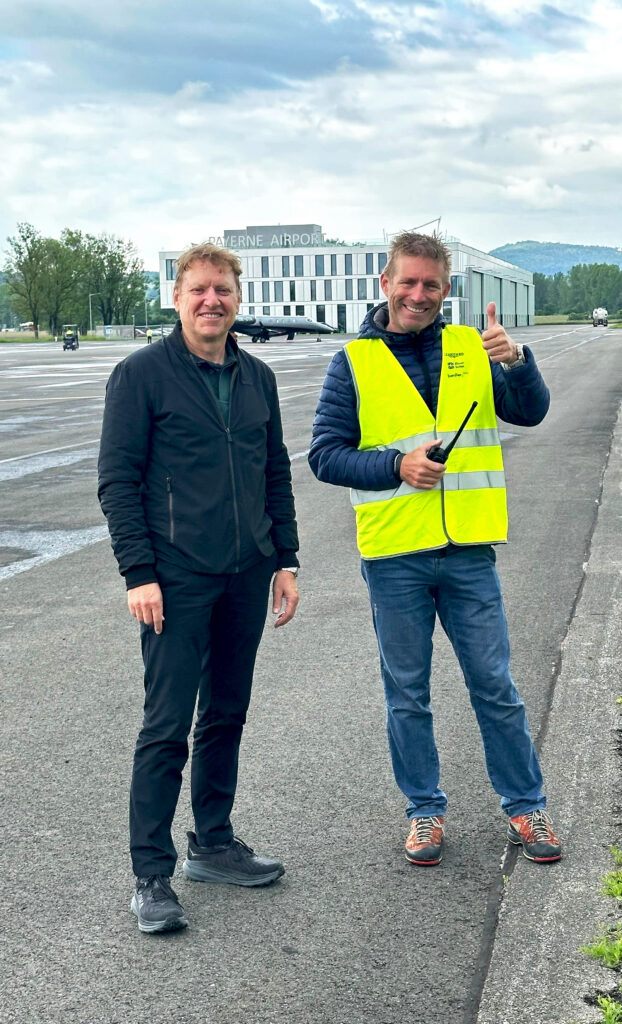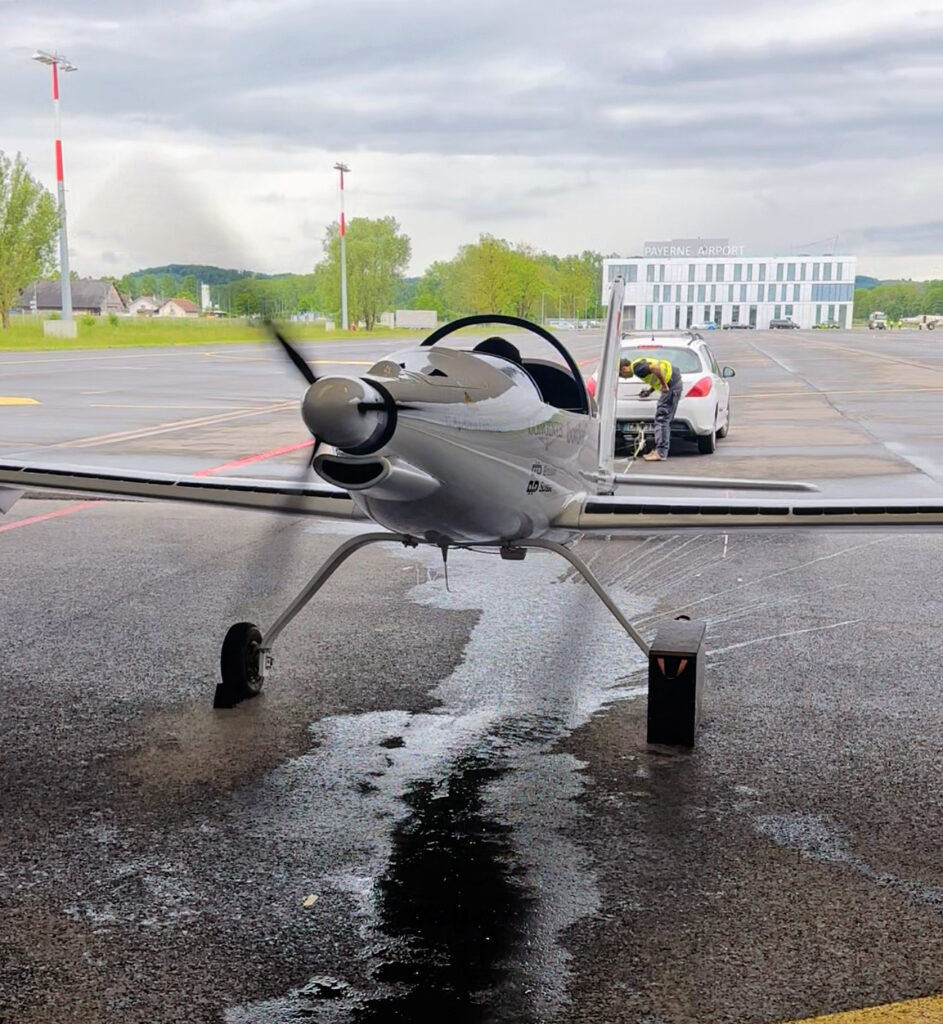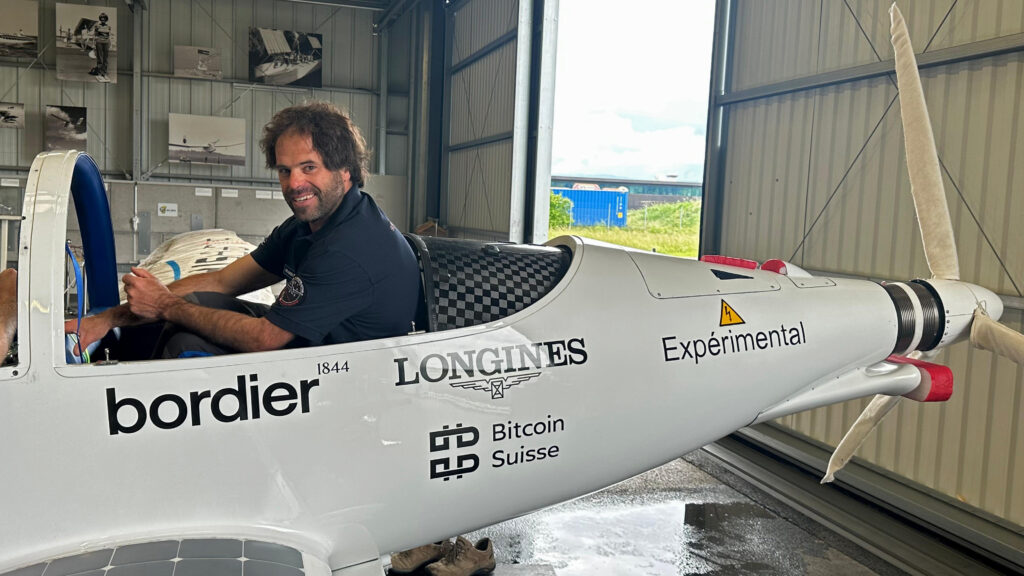HB-SXA finds its voice again
Latest news: Like the rest of the SolarStratos team, HB-SXA had been eager to return to the skies. Since 19 May, the aircraft has been flight-ready — and keen to make itself heard, its new variable-pitch propeller bringing a noticeable change in tone, with a deeper, more resonant sound! With the official Permit to Fly from the Federal Office of Civil Aviation in hand, Raphaël Domjan and our test pilot remained on standby, awaiting the first favourable weather window.
That window finally opened on Friday 23 May, when the first flight of the year was successfully completed — just ahead of an approaching thunderstorm. This 107th flight took place under the attentive gaze of a special guest: Mark Rocket, space enthusiast and CEO of Kea Aerospace, who is soon to become the first New Zealander in space as part of Blue Origin’s next mission. The result of this inaugural flight of 2025? Several performance enhancements — a promising beginning as the team looks ahead to the planned 10,000-metre flight this summer.

Ground thrust tests: a propeller that packs a punch!
Optimisation. Since 13 May, our home base in Payerne has been alive with activity. One major advantage of ground-based thrust testing? It can continue regardless of the weather — grey skies and rain included. A full sequence of tests was conducted according to a precise protocol, including fine-tuning the pitch of the variable propeller to optimise climb rate in relation to energy consumption.
The outcome confirmed the aircraft’s impressive performance: with HB-SXA securely anchored to the ground, the dynamometer recorded nearly 200 kilograms of thrust. And yes — thrust is the technically correct term, even if, like one of our online followers who raised the question, we tend to picture the propeller as ‘pulling’ the aircraft. Propeller thrust even has its own equation — in newtons, thrust (N) = mass (kg) × acceleration (m/s²).

We can even hear the birds sing!
Almost completely silent. One of the standout benefits of a solar-electric aircraft like SolarStratos — though several of you have rightly noted it isn’t entirely noise free — is just how much quieter it is compared to conventional aircraft (especially when set against the roar of FA/18 jets ripping through the skies above Payerne). While reviewing footage from recent ground tests, we were delighted to hear birdsong in the background — a gentle reminder of the aircraft’s near-silent operation.
Beyond offering a decarbonised way to experience the joy of flight, SolarStratos brings with it the added advantage of remarkably low noise emissions.
A curious new bird aboard: welcome Baptistou!
Team update. If you’ve been following us on social media or through our website, you may have spotted a new addition to the SolarStratos team. Jean-Baptiste Loiselet (whose surname translates as ‘little bird’) — better known as Baptistou — has joined us to support the technical operations around this summer’s preparatory flight campaigns, first in Payerne and then in Sion, ahead of our planned attempt to reach 10,000 metres. Armed with the insights gained last year, the team is more determined than ever to achieve this milestone — and Baptistou brings valuable expertise. A seasoned figure in solar aviation, he has spent the past several years developing a remarkable self-launching solar glider capable of autonomous flight. In 2022, he completed a fully solar-powered, solo tour of France in his aircraft, Sol.Ex. Find out more about his pioneering work at https://www.desailespourlaplanete.fr.


